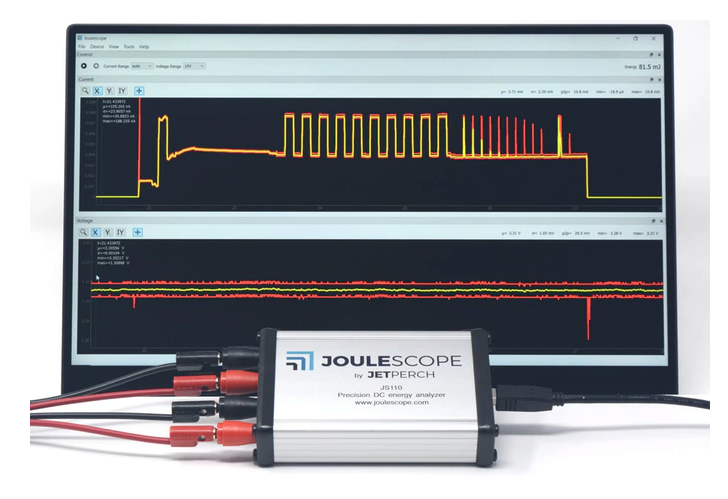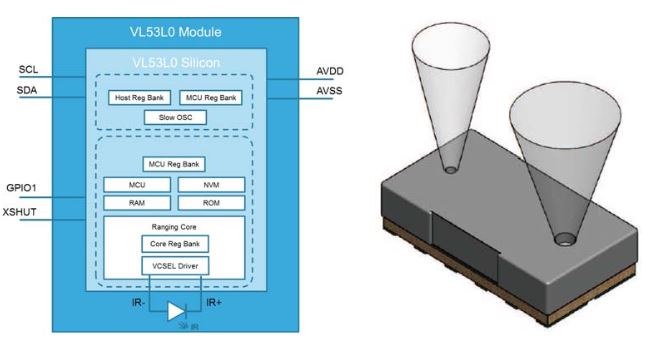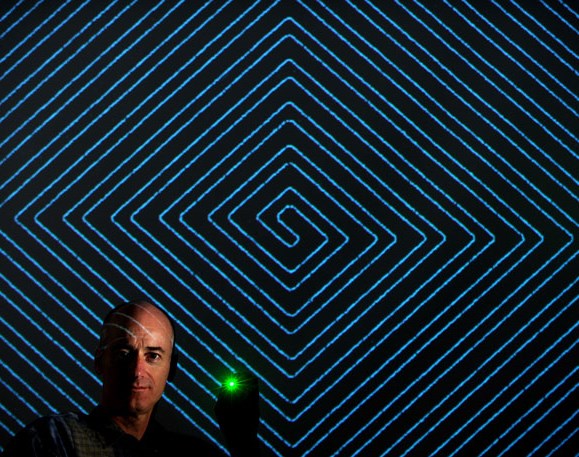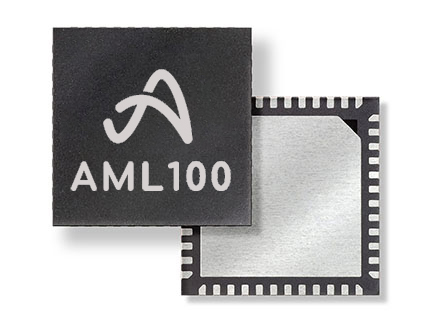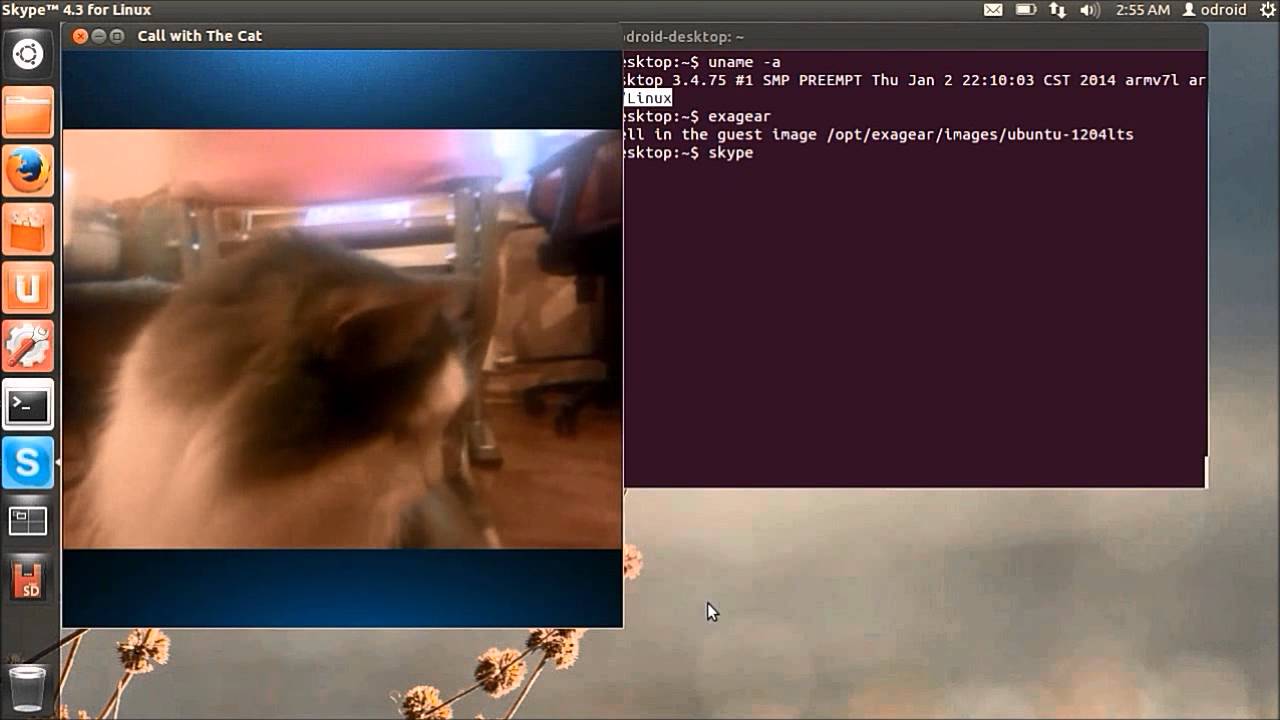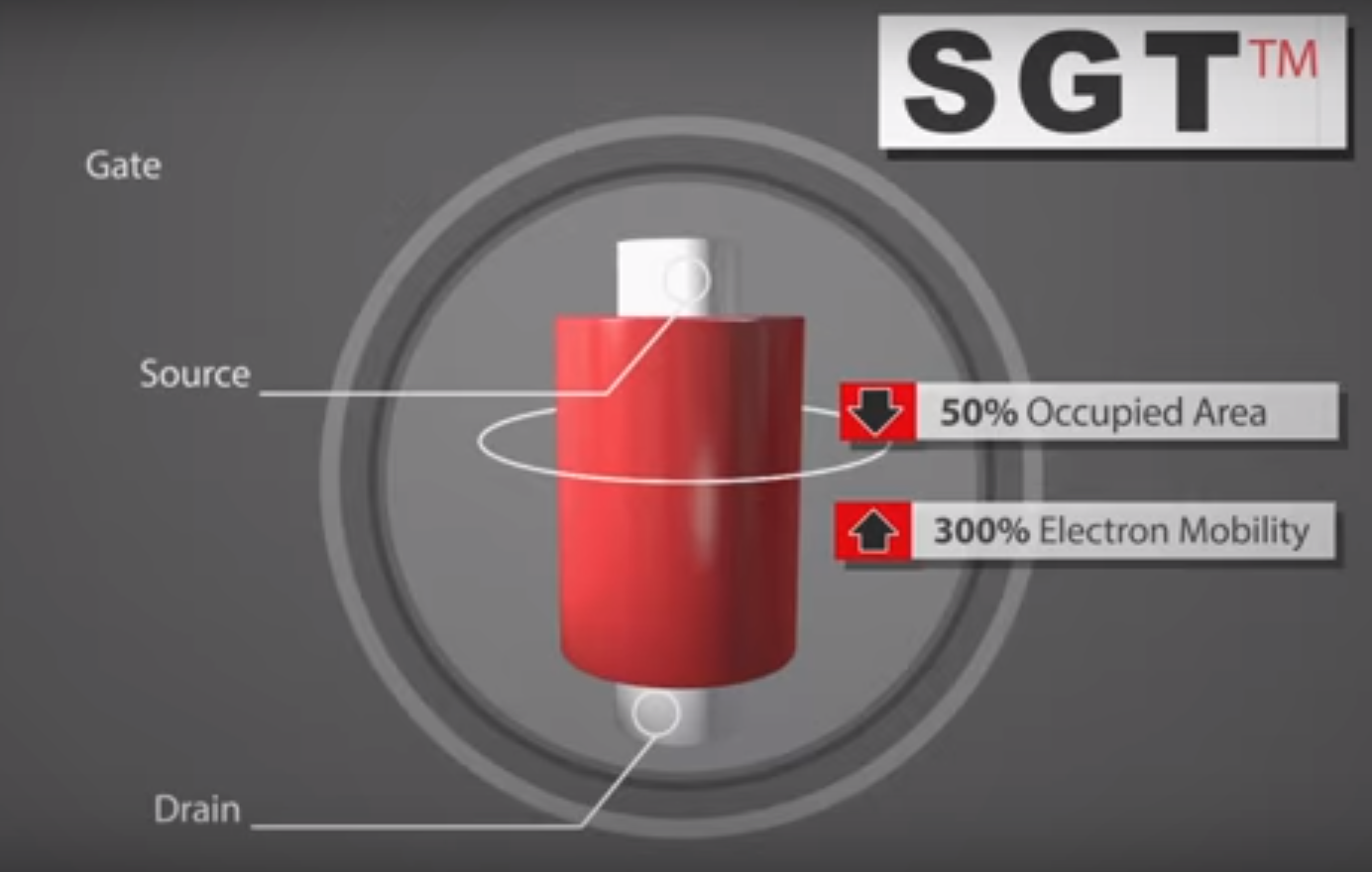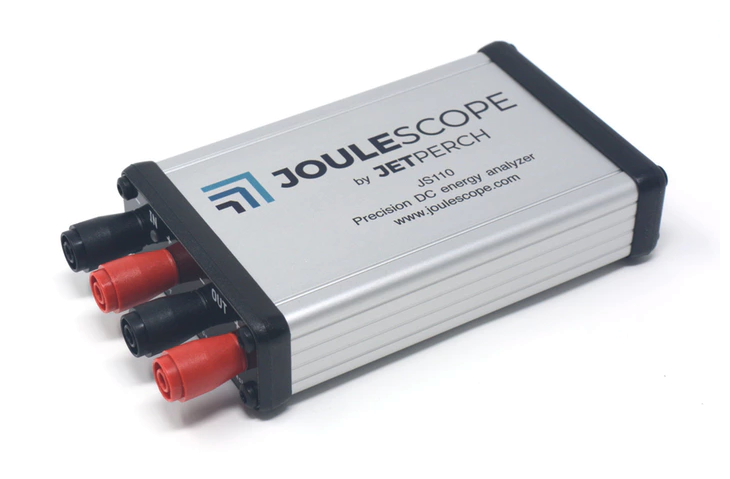
Joulescope™ enables designers, engineers, and makers to quickly and easily optimize the energy consumption and battery life of a target device. Joulescope is designed to automatically handle wide current ranges and rapid changes in energy consumption, while allowing the target device to run normally. Jetperch LLC writes:
Measuring energy consumption during product development is crucial, especially for battery powered and always-on devices. However, measuring energy consumption accurately has been expensive, tedious or error-prone.
Low voltage drop: Most multimeters and current meters have a significant voltage drop (sometimes called burden voltage or insertion loss) which effects the actual voltage delivered to the device under test. Joulescope has a total voltage drop of 25 mV at 1 A, which keeps your target device running correctly. Joulescope’s extremely fast current range switching maintains low voltage drop even under rapidly varying current demands.
Amazing dynamic range: Joulescope accurately measures electrical current over 9 orders of magnitude from amps down to nanoamps. This wide range allows accurate and precise current measurement for modern devices. Sleep modes are often just nanoamps (nA) or microamps (µA). Active modes are often milliamps (mA) or amps (A).
Makes the invisible visible: Joulescope measures current and voltage 2 million times per second with 250 kHz bandwidth. This high sampling rate makes the power consumption of interrupt service routines, inrush currents and other short events visible.
Easy to use: Joulescope reports cumulative energy consumption along with real-time current, voltage, and power. The multimeter view clearly shows the most recent value while the oscilloscope view allows you to explore changes over time. Much simpler and more accurate than anything in its class!
Customizable: The Joulescope host software is open source on github. You can also swap the banana jack front panel with front panels that have other connector types! The front panels are open source on github. We ❤ open source.
Joulescope’s precision and fast sample rate enabled me to discover unexpected processing, and I reduced my device’s energy consumption by removing this unnecessary processing. Joulescope is now a valuable part of my toolset for debugging and verifying designs.
– Frank Hunleth, VP Hardware Engineering, SmartRent Inc.
Specifications
- -1V to 15V voltage range
- -1A to 3A current range, continuous
- Up to 10A pulses (< 10 ms, < 3A average per second)
- Down to 1.5 nA resolution, equivalent to 32-bits of dynamic range
- Synchronously measures voltage and current at 2 million samples per second
- 250 kHz bandwidth
- Rapid 1 μs switching between shunt resistors for seamless dynamic current measurement
- Computes power and total energy
- Operates with minimal voltage disturbance between IN and OUT ports
- Up to ±48V common mode voltage between USB ground and IN-, IN+, OUT+, and OUT-
- Programmable operational/off selection for power cycling the target device and measuring inrush currents
- USB 2.0 high-speed host connectivity with full-rate data streaming
- Host software support for Microsoft® Windows®, Apple® Mac® OS X® and Linux®
- Host software provides real-time graphs of current and voltage over time
- Host software is open source and available on github
- Swappable front panel with open source designs on github
- Firmware upgradable
Compared to a multimeter
The classic low-cost approach to estimating total energy consumption is to use a normal multimeter. If the voltage is changing, you need two multimeters, but if the voltage is constant, you just need one multimeter to measure current. Since the device has multiple power states, you need to put the device into each state and measure the current for that state. You then need a model of how long the device is in each state. You multiply the state currents times their duration and add them all together to estimate total energy. This approach is very tedious and error-prone. What happens if you accidentally change something that drastically effects energy consumption while using this method? Are you performing this energy test every day? Hardly. You usually don’t find out for weeks or even months which is really bad for the project.
The project will launch on 19 Feb 2019 on kickstarter.com with Pledges starting st US$ 399. More information is available on www.joulescope.com




